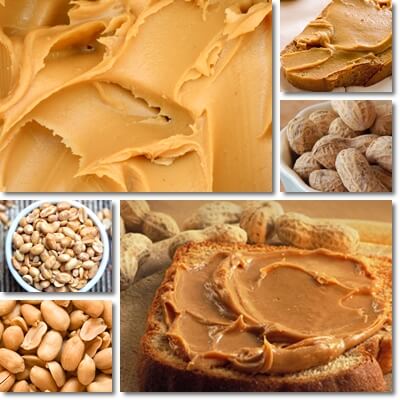Diabetics can eat peanut butter safely with their condition and enjoy benefits such as better blood sugar and insulin control as a result. Studies actually show that regular, but modest consumption of peanut butter can reduce type 2 diabetes risks over time. For diabetics, the only condition is to limit intake to very small amounts of the likes of 1-2 tablespoons or the equivalent of 16-32 grams. Ideally, intake should be restricted to 1-2 servings a day to avoid excess calorie intake and prevent weight gain which would be detrimental to diabetic health.
Also, it’s preferable to choose unsalted, unsweetened options without any added vegetable oils which would increase the energetic value of the product as well as promote weight gain, encourage hypertension and other diabetes-related complications. The best peanut butter for diabetes is made from dry-roasted peanuts, without added sugars or artificial sweeteners, salt or fats, emulsifiers or flavor or color additives. If you can’t find a bigger brand that offers peanut butter that meets these conditions, you can always look for artisanal peanut butter products. Lastly, it doesn’t matter if it’s chunky or crunchy or smooth, just that it is a high-quality product with natural, nutritious ingredients.

Diabetes and peanut butter generally make a good pair and the reason for this is that peanut butter is a low glycemic index food with minimal effects on blood sugar. The glycemic index (GI) is a scale that estimates how fast the carbohydrates in a food raise blood sugar levels. Below 55 is a low GI. Between 55-69 is a moderate GI. Between 70-100 is a high GI. Diabetics and anyone looking to manage their blood sugar are advised to choose foods as low as possible on the GI scale, such as peanut butter.
Peanut butter glycemic index: 14 (low)
Peanut butter made from just peanuts, with no added sugar or sweeteners, is estimated to have a glycemic index close to or identical to that of peanuts, which is 14. Added sugars or natural or artificial sweeteners raise the glycemic index value, but even so, peanut butter should remain low on the GI scale. This is because it’s an important source of fat and protein which slow down digestion and the rate of sugar absorption in the bloodstream, contributing to steadier blood sugar levels.
Peanut butter glycemic load: 2 (low)
The glycemic load (GL) is a scale that estimates how the carbohydrates in a specific serving of food affect blood sugar levels. Below 10 is a low GL. Between 11-19 is a moderate GL. Over 20 is a high GL. Diabetics are advised to choose foods with as low a GL as possible. A typical serving of peanut butter (no added sweeteners) is estimated at 1-2 tablespoons or the equivalent of 16-32 g. One tablespoon contains, on average, 3.5 g of carbohydrates.
Assuming one has 4 tablespoons/ 2 servings (3.5 g of carbs X 4 tablespoons = 14), that would make the glycemic load value:
14 (g of carbs in 4 tablespoons) X 14 (glycemic index)/100 = 1.96, rounded at 2 (so a low glycemic load).
For a diabetic who is advised to limit intake to 1 or 2 tablespoons, GL values are even lower.

Does peanut butter raise blood sugar?
Technically, it does because it has carbohydrates (3.5 g per tablespoon/16 g) and, during digestion, carbohydrates are broken down into sugar, their simplest form, then absorbed into the bloodstream, raising blood sugar levels. However, it also has plenty of fat and protein as well (almost 8 g of fat and 3.5 to 4 g of protein per tablespoon/16 g). And fat and protein slow down digestion and the rate of sugar absorption into the bloodstream, contributing to steadier blood sugar levels and better control.
What this means is that eating peanut butter (separate from other foods) has rather minimal effects on blood sugar so it won’t cause spikes. At the same time, eating peanut butter with high-glycemic foods (ex: jelly, jam, toast) lowers the glycemic values of those other foods and contributes to better blood sugar control. However, diabetics should still count the carbs they eat to avoid exceeding recommended intakes. If there are added sugars or other sweeteners, then effects on blood sugar are likely to be more prominent.
Benefits of peanut butter for diabetes
1) Studies show it reduces type 2 diabetes risks in non-diabetics.
2) Has minimal effects on blood sugar and improves blood sugar control.
3) Holds benefits for reducing insulin spikes and improves insulin sensitivity.
4) Low in carbs and high in protein and fat, especially unsaturated fats – beneficial for blood sugar metabolism.
5) Source of magnesium with benefits for blood sugar control (179 mg per 100 g, out of 400 mg recommended daily intake, RDI).
6) Source of magnesium and potassium (649 mg per 100 g, out of 4700 mg RDI) for better blood pressure numbers and diabetes-associated hypertension.
7) No-sodium options that are also good sources of magnesium and potassium combat water retention and swelling and puffiness.
8) Rich in B vitamins (B1, B2, B3, B5, B6) with benefits for diabetes-associated nerve damage.
9) Satiating and filling – supports an active lifestyle and encourages weight loss.
Side effects of peanut butter for diabetes
1) Allergic reaction and anaphylactic shock in those allergic to peanuts – avoidance of peanuts in all forms and products is imperative.
2) Weight gain is consumption is excessive or too frequent. Weight gain predisposes to diabetes complications.
3) High blood pressure, water retention, arm and leg swelling, face puffiness, abdominal bloating from products high in sodium/with added salt.
4) High cholesterol, high triglycerides, high LDL cholesterol – if intake is excessive, fats ultimately accumulate and cause side effects for the cardiovascular system first of all.
5) Difficulty managing blood sugar and insulin resistance – if consumption is excessive and products have added sugar or sweeteners.
How much peanut butter can diabetics eat?
Although you can definitely eat peanut butter with diabetes, you may only eat small servings of the likes of 1-2 tablespoons, once or twice a day, during a meal or as a snack, but preferably not every single day. This allows for variety in your diet, ensures you enjoy a range of health benefits aimed at diabetes specifically and prevents side effects such as weight gain and associated complications. Ideally, adjust your intake according to your nutritional requirements and level of physical activity, other dietary choices and your current state of health, but keep to small portions.
Here are some examples:
example 1: if you need to lose weight, have 1 tablespoon a day, not 2 or more.
example 2: have peanut butter at breakfast to keep you satiated and energized, but also allow you time to use up the calories.
example 3: instead of jelly or white bread, pair it with some apple slices, pear, fennel or celery stalks, (unless allergic).
